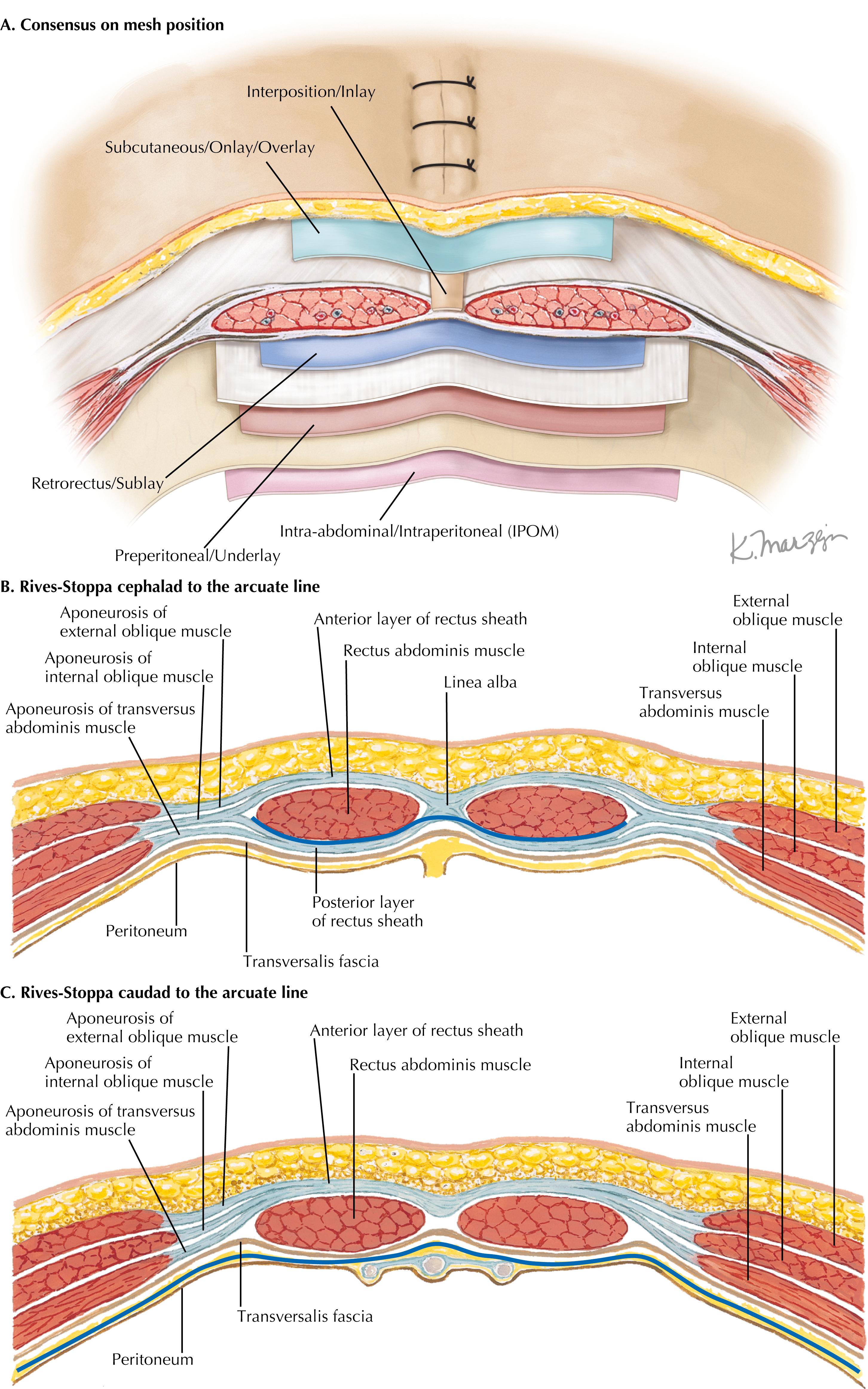Physical Address
304 North Cardinal St.
Dorchester Center, MA 02124
Approximately 300,000 to 400,000 ventral hernias are fixed yearly in the United States, encompassing primary defects as well as the 20% to 25% of incisional hernias that occur after midline laparotomy and 24% to 43% of recurrences even after mesh repair. Even for the smallest primary defects, long-term follow-up of randomized controlled data has found that mesh reinforcement demonstrates superiority to suture repair. Still, the frequency of hernias only seems to be increasing despite the ubiquity of this disease and high-level evidence supporting the use of mesh.
There are three considerations relevant to decision making for management of hernias:
The patient: including demographics, medical comorbidities (e.g., smoking status, body mass index, diabetes control) and impact of the hernia on the patient’s quality of life
The hernia: including width, length, location (midline vs. proximity to bony prominences), level of contamination, and context of presentation (elective vs. emergent)
The repair: variables include choice of mesh (synthetic vs. biologic vs. biosynthetic), location of mesh relative to the abdominal wall, technique (open vs. laparoscopic vs. robotic), and use of adjuncts such as component separation techniques or skin flaps
These considerations are all intimately related, making comparisons of techniques or the identification of high-risk patient/hernia characteristics challenging. Although a detailed discussion of each component is beyond the scope of this chapter, one should always have a skeptical approach to the review of hernia literature, as claims of superiority regarding a type of mesh or technique may not have controlled for the other variables relevant to the outcome of interest.
Despite the growing complexity of this field and seemingly innumerable permutations of treatment options, open retromuscular hernia repair (ORHR) has recently gained tremendous popularity, decades after its initial depiction. French surgeon Jean Rives first described retrorectus mesh reinforcement for large ventral eventrations in 1973, but it was not until 1989 that his colleague Rene Stoppa published the technique in English. Although laparoscopic ventral hernia repair was popularized in the 1990s, several modifications to the Rives-Stoppa retrorectus dissection were described from 2006 to 2012, culminating in the description of the transversus abdominis release (TAR). These modifications extended the benefits of the Rives-Stoppa repair to even larger hernias, and as such the TAR has enjoyed wide dissemination among surgeons in the past decade. Here we review the benefits of all open retromuscular repair techniques and the steps to these operations that are guided by a comprehensive understanding of abdominal wall anatomy.
Retromuscular mesh placement with concomitant reconstruction of the linea alba offers several key advantages over other techniques:
Retromuscular mesh placement ( Fig. 40.1A ) allows for mesh reinforcement of the hernia defect without exposure of the prosthetic to the viscera as in an underlay (i.e., intraperitoneal onlay mesh [IPOM] placement).

Because the prosthetic is not exposed to the viscera in the retromuscular space, uncoated meshes are used, which are more resilient to infection and substantially less expensive than coated or barrier meshes.
Mesh in the retromuscular space also has direct face-to-face apposition of posterior fascia and muscle anteriorly to allow for prosthetic ingrowth and separates the mesh from superficial wound morbidity. Alternatively, mesh placed in the “onlay” position—above fascia—is subjected to potentially devascularized subcutaneous tissue when flaps are raised to accommodate the reinforcement material.
In contrast to open and laparoscopic bridged repairs, ORHR also allows for re-creation of the linea alba, which has been shown to provide benefits in regard to core abdominal strength—both by returning the rectus muscles to the midline and by re-establishing a firm re-insertion point for the lateral oblique muscles.
The Rives-Stoppa retrorectus dissection allows for all the aforementioned benefits with mesh placement in the retrorectus space ( Fig. 40.1B and C ).
Become a Clinical Tree membership for Full access and enjoy Unlimited articles
If you are a member. Log in here